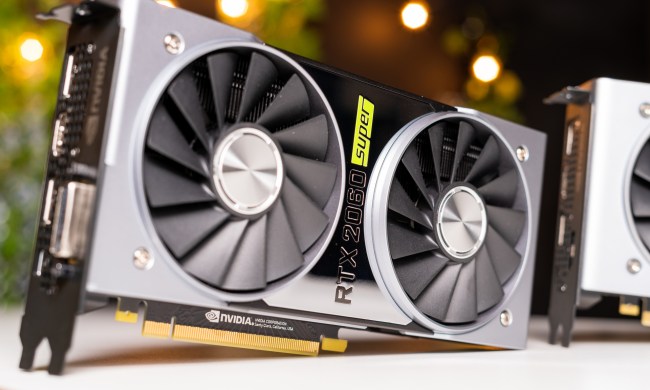Nvidia is looking to make work and development in artificial intelligence more accessible, giving researchers an easy way to access its DGX supercomputer. The company announced that it will launch a subscription service for its DGX Superpod as an affordable way to gain entry into the world of supercomputers.
The DGX SuperPod is capable of 100 petaflops of AI performance, according to the company, and when configured 20 DGX A100 systems, it’s designed for large-scale AI projects.
Despite the company’s marketing take on the new subscription service, affordable is still relative, as Nvidia’s new Superpod subscription still costs $90,000 per month when it launches this summer.

The Nvidia Base Command Platform will be powered by its DGX computers, and Nvidia is working with NetApp for storage. Nvidia also announced that it is working with Amazon Web Services and Google Cloud for instances within the cloud. The company claims that the hybrid experiences will allow developers to schedule jobs on-premise or in the cloud.
By relying on the cloud and a subscription model, AI researchers now only need a smaller form factor that’s easier to fit into a server, and Nvidia is billing its new AI service as part of the company’s efforts to democratize artificial intelligence work. In the consumer space, Nvidia is also relying on the cloud to bring the power of its graphics technologies to consumers who may be unable to buy, run, or afford their own discrete GPU setup for gaming through its GeForce Now service.
For reference, Nvidia’s A.I.-powered DGX 2 supercomputer launched at a price of $399,000 and was known as the world’s largest GPU, while the newer, more powerful DGX A100 starts at $199,000 and is capable of 5 petaflops of AI performance.
The company claims this new subscription model allows you “to experience the best of Nvidia software and hardware that’s easy for you to use” without any contractual commitments. It’s designed as a way to test drive Nvidia’s solutions.
Nvidia’s subscription-based model will also include its Bluefield 2 data center processing unit, or DPU, with every DGX.

“A new type of processor, designed to process data center infrastructure software, is needed to offload and accelerate the tremendous compute load of virtualization, networking, storage, security, and other cloud-native AI services,” Nvidia CEO Jensen Huang said of his company’s DPU earlier this year when the company unveiled its plans for Bluefield 3. “The time for BlueField DPU has come.”
Developers will have access to Nvidia’s AI Enterprise software, which is an open-source stack that the company has integrated into a coherent platform with a special focus on enterprise support. The AI Enterprise software also features deep integration with VMWare’s vSphere. Customers will also have access to Nvidia Omniverse Enterprise software.
A specific launch date was not announced, but the company said that all this will be coming this summer.
In data centers, Nvidia is looking to expand the ARM ecosystem beyond just mobile. Beginning next year, Nvidia announced that it will focus its work on bringing the ARM architecture to data centers. Given that a lot of AI work is already handled by the GPU, Nvidia claims that the role of the traditional CPU will become that of a data orchestrator rather than for heavy compute purposes.
The company hopes to leverage its acquisition of Arm to help transform the data center for AI workloads into an energy-efficient solution that’s just as powerful. Nvidia executives had previously hinted at its ambitions with the ARM architecture earlier this year when it announced its Grace processor.
Be sure to follow Digital Trends for all the latest news from Computex.



